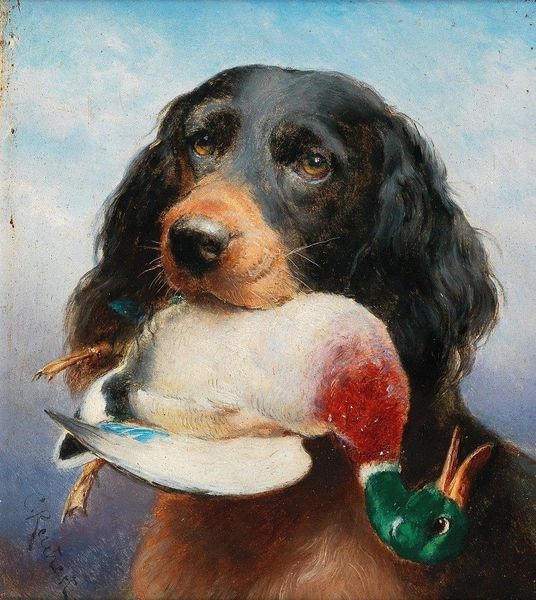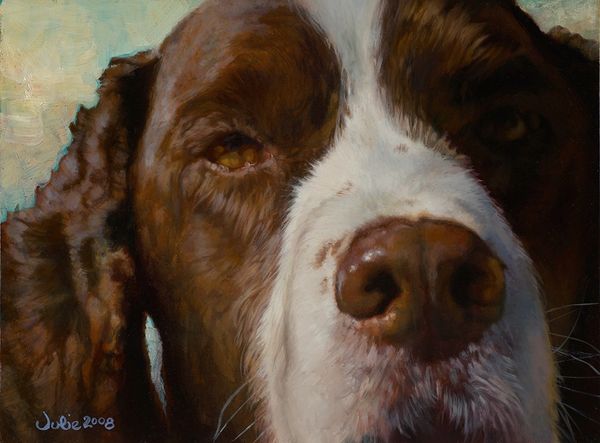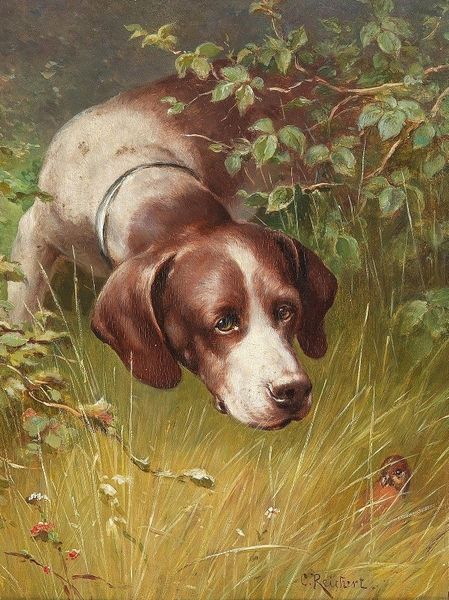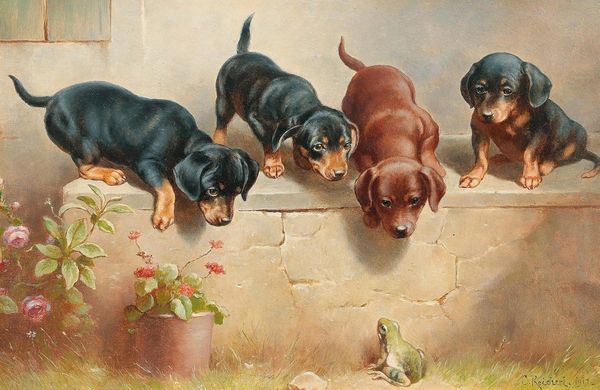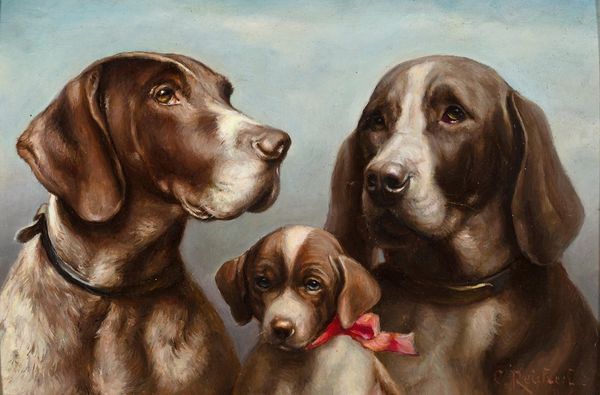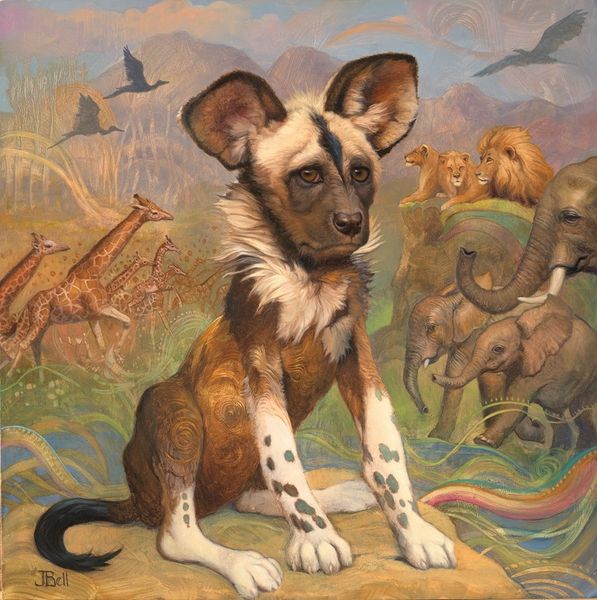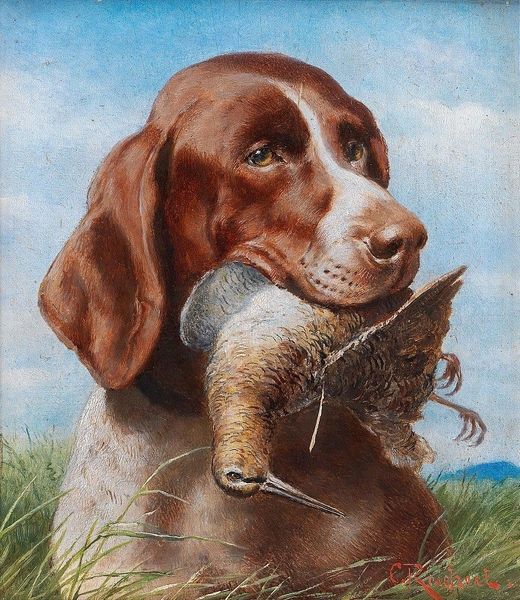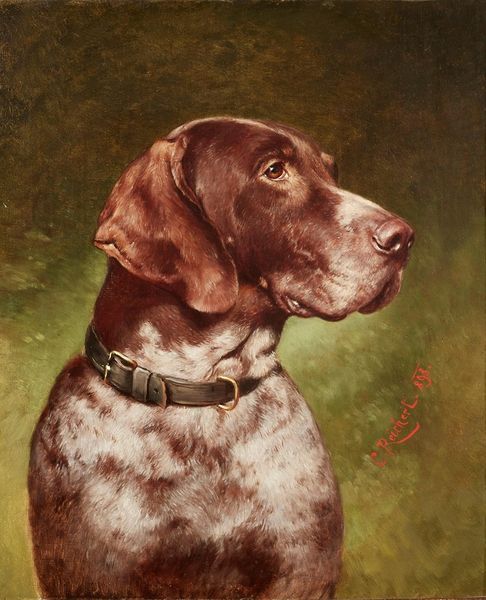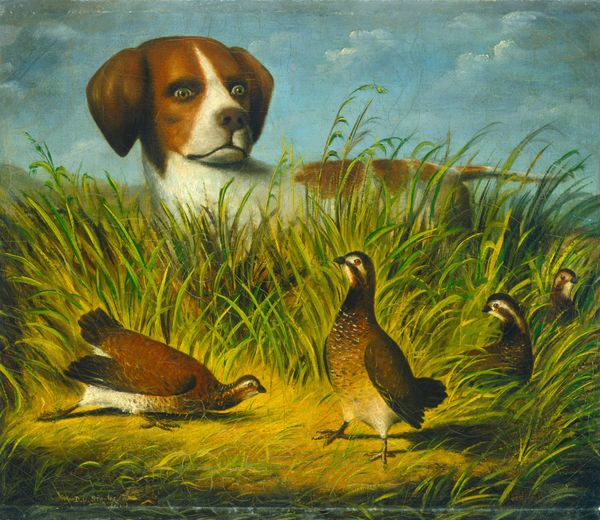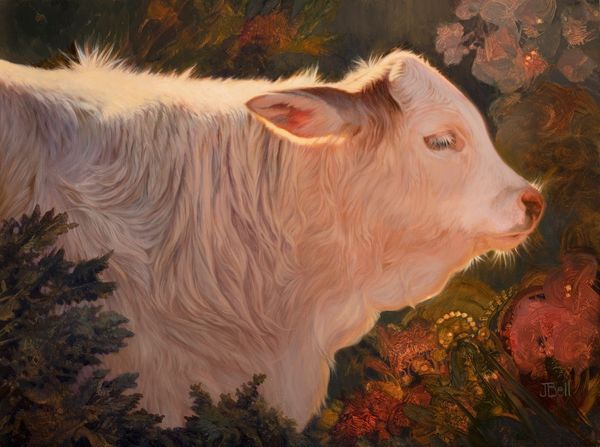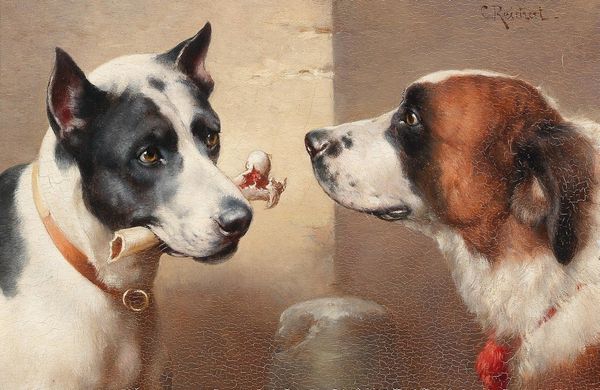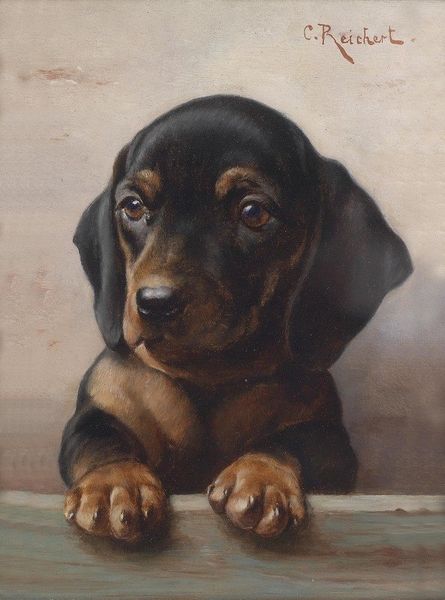
oil-paint, impasto
#
portrait
#
oil-paint
#
landscape
#
oil painting
#
impasto
#
animal portrait
Copyright: Modern Artists: Artvee
Curator: We're looking at "Duckling and the Dog" by Scott Gustafson. He’s known for creating anthropomorphic characters rooted in folklore and classic literature, and I think this piece exemplifies his approach. Editor: My first thought is the composition is brilliant; the close cropping and perspective immediately draw me in. It’s so intimate, you can practically feel the damp earth and bristly grass under the dog's muzzle. Curator: Right, and beyond the animal portraiture, consider the social dynamic represented. We have a tiny duckling confronting this much larger dog; what kind of power dynamic do you perceive? Is it confrontation or curiosity, especially since its impossible to determine an exact time when this work was made? Editor: It's definitely a confrontation, and I immediately focus on how Gustafson has used impasto techniques here with such obvious brushstrokes in the grass to achieve this. You can see he painstakingly layered to achieve dimension on a micro-level. I almost wonder how the textural quality mirrors the physical process of artistic creation. Curator: That's interesting because I see more than just textural layering. Look at the dog’s eyes and consider its gaze in the broader narrative. Is this about the history of predator-prey relations? Perhaps reflecting the more nuanced politics of co-existence and maybe an ecological statement. Editor: I agree about the nuanced ecological statements. What really hits me, however, is what kind of oil paints Gustafson may have worked with to get a more tactile sense of natural pigments and artisanal material as if to remind us where paints originate. Curator: I find it remarkable how he humanizes these animals in a seemingly natural landscape—a setting not separate from political statements but rather infused by and through it. Editor: And speaking of a tactile natural sense, the work could very well highlight class divisions and means of production within rural labor—making me question the artist's own access to high-end raw material in paints. Curator: It’s amazing to consider art reflecting historical context with materiality that also prompts us to ask critical questions about social inequality in production methods. Editor: And it underscores that art doesn't simply appear but arrives via human effort, labor, and deliberate decision-making which gives context beyond the surface.
Comments
No comments
Be the first to comment and join the conversation on the ultimate creative platform.
